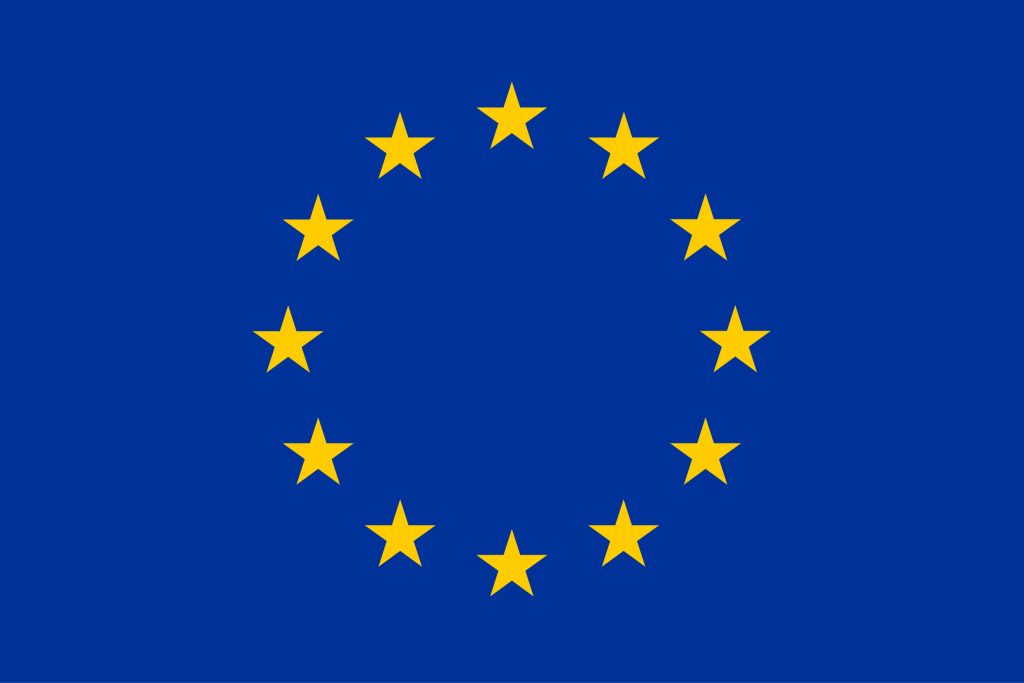NEWS FROM THE PILOT
Methods for collecting and analyzing tourists and visitors
On February 13th, the pilot coordinated held a training session on methods for collecting and analyzing tourists and visitors. The session was held in Uppsala with 15 participants ranging from employees within three different municipalities, place developers, outdoor recreation strategists, and interest organization.
Further information is available in the news published on the INCULTUM blog.
Öregrund promotional posters
A participatory investigation is carried out under the coordination of Uppsala University, to engage visitors to connect with the website and express their comments about their experience. Swedish (PDF-camping, PDF-stad) and English (PDF-camping, PDF-city) versions of the promotional posters are available here for download.
Location of the pilot

Rural and peri-urban areas in the Swedish archipelago and the great lakes of Sweden.
Responsible partner: Uppsala University
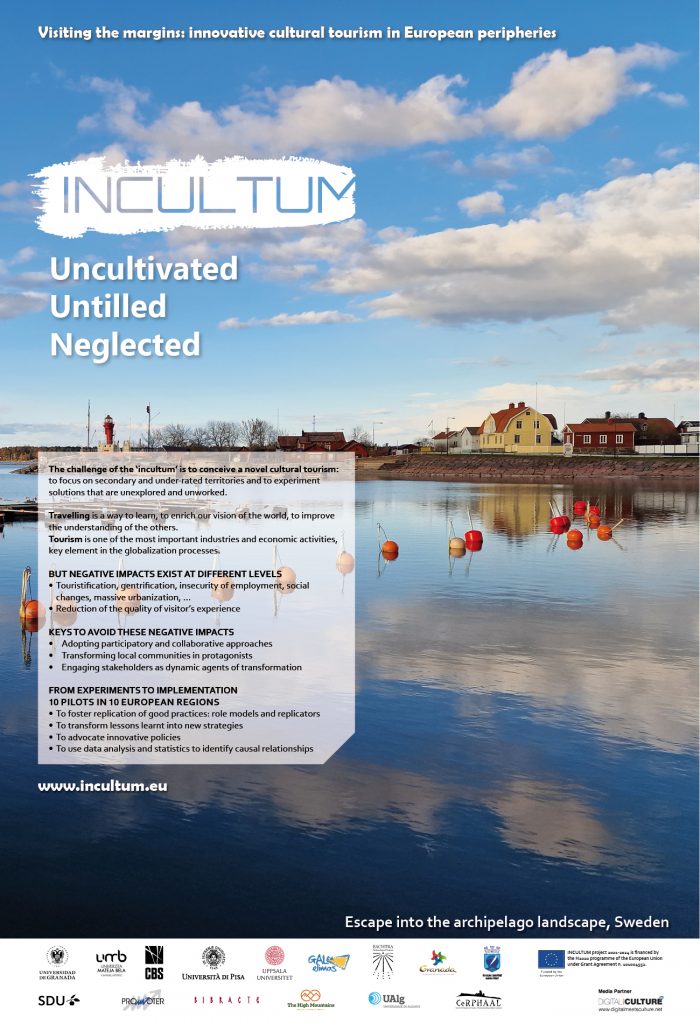
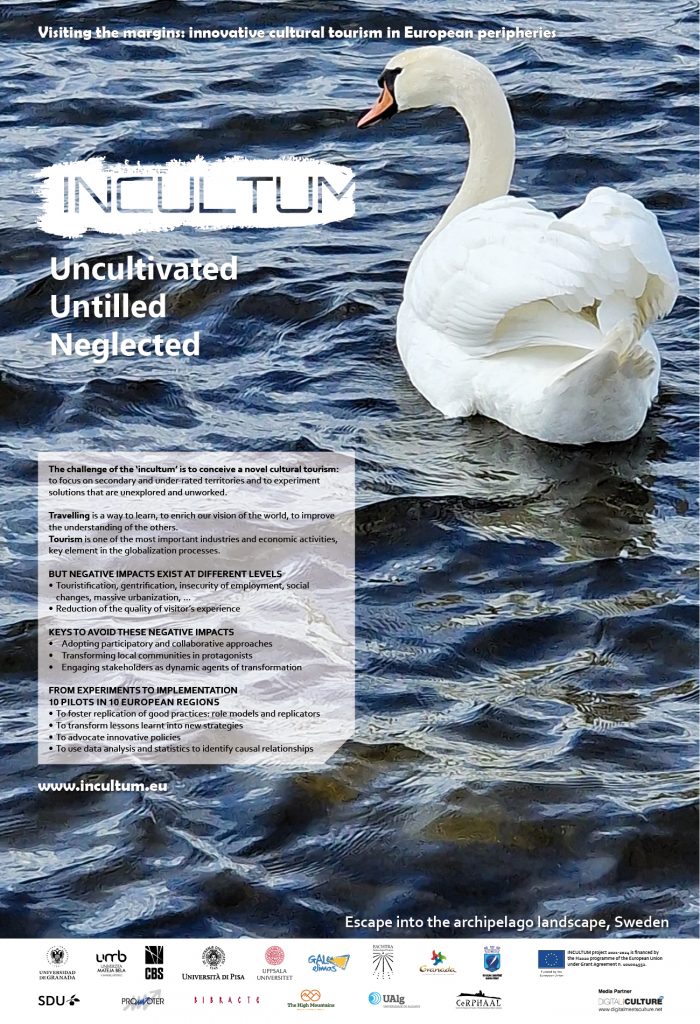
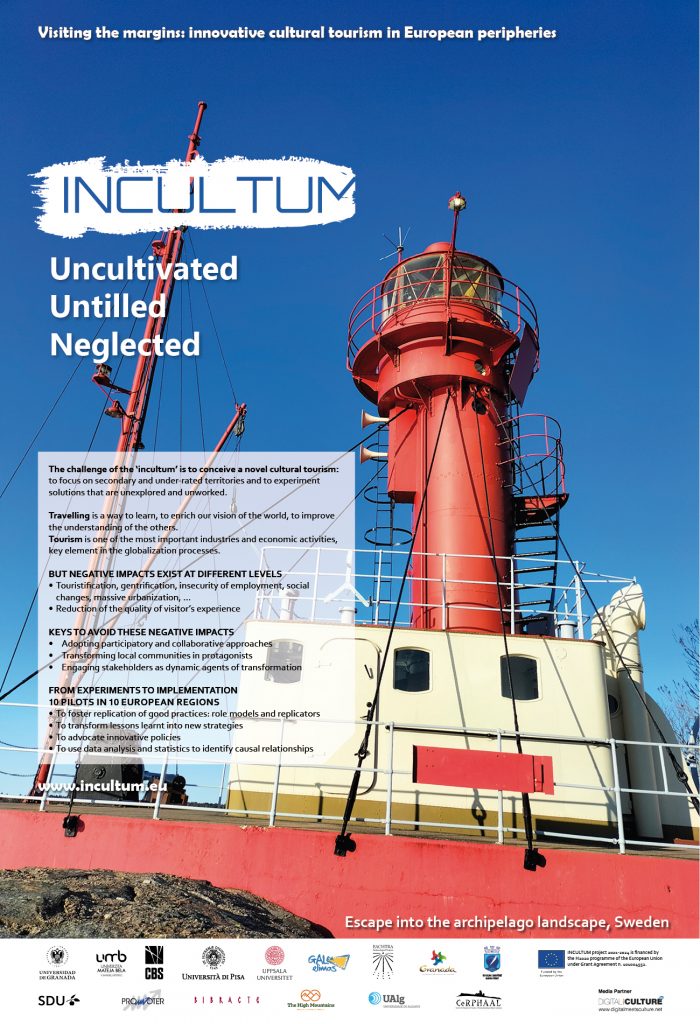
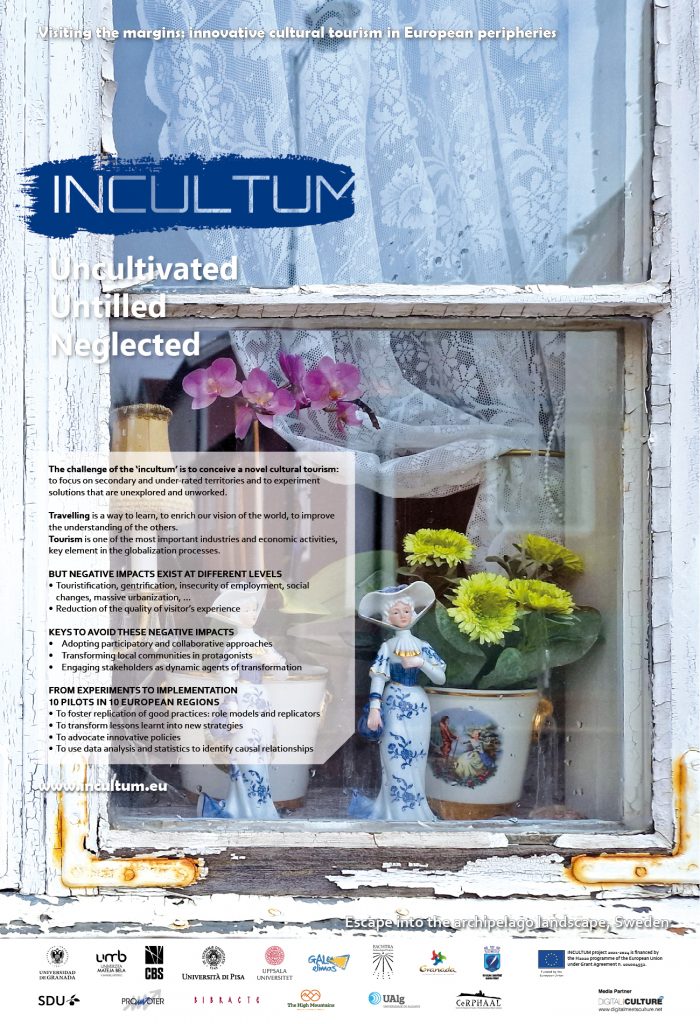

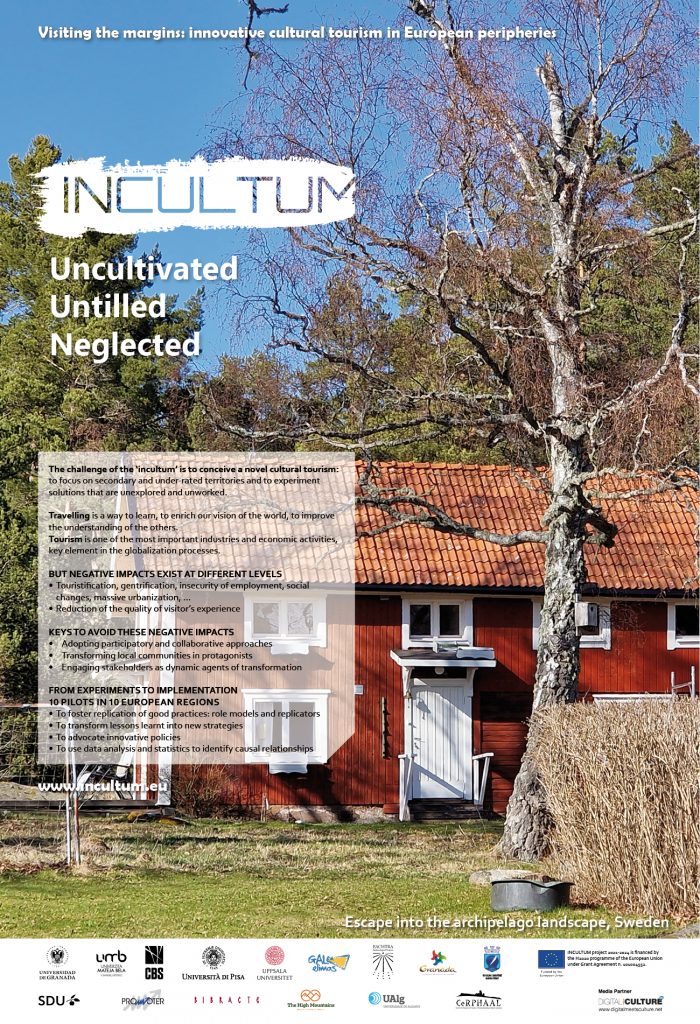
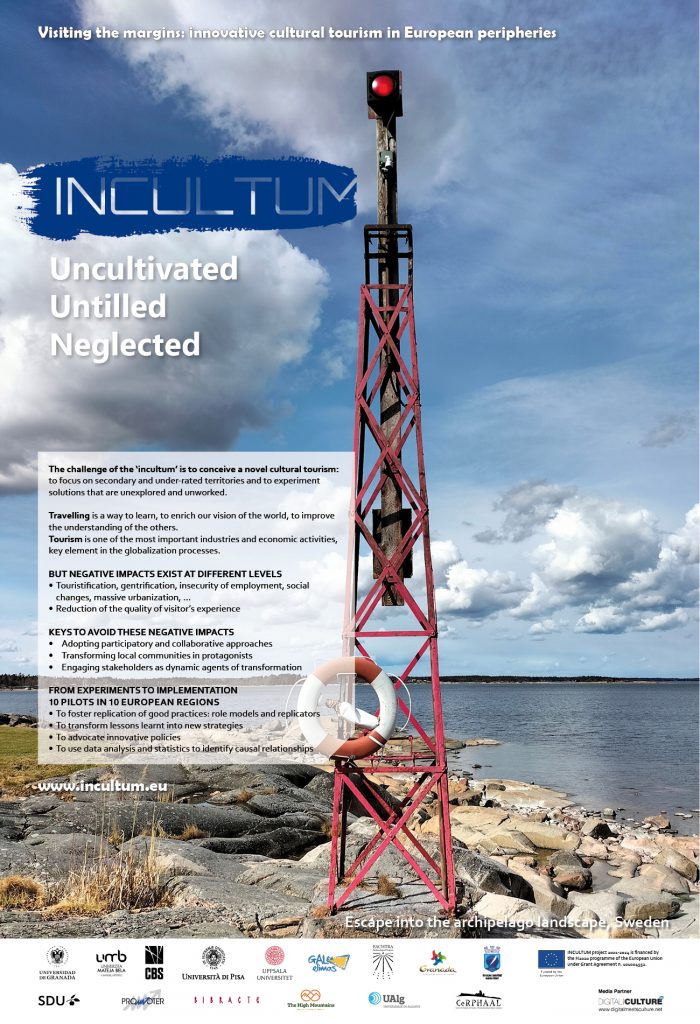
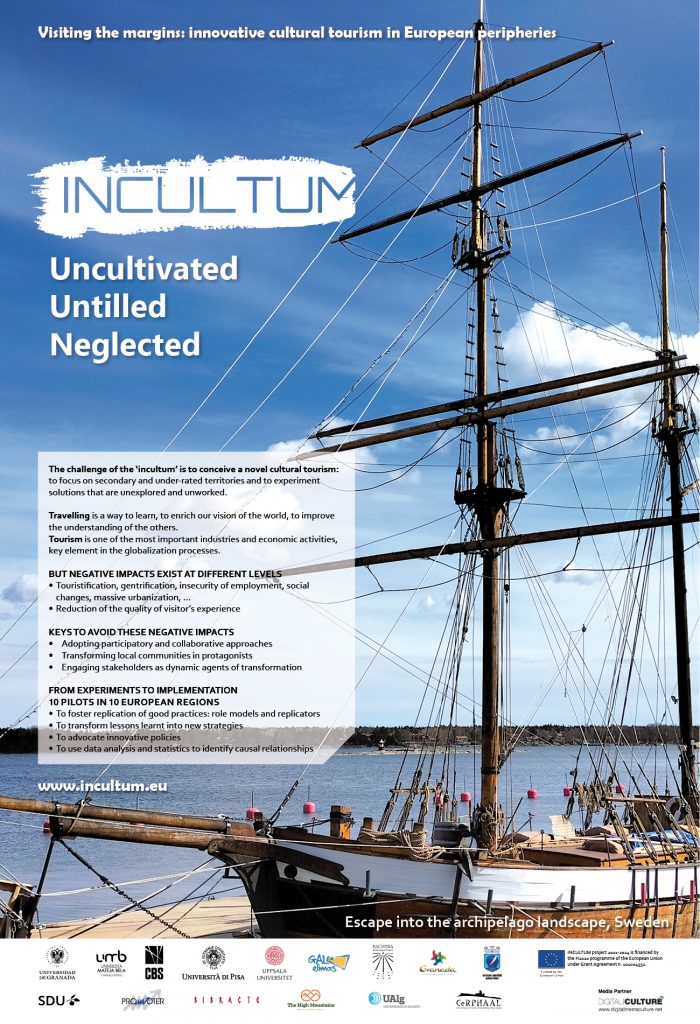
Context
A unique feature of Swedish tourism is that Sweden has more than 250,000 islands (far more than any other country) located along the coasts or in the ca. 100,000 lakes. In spite of a six per cent growth in tourism in Sweden, which is higher than the general GDP growth, tourism is becoming ever more concentrated in urban areas. Due to the low population density and a tourism that is mostly concentrated in urban areas, several parts of Sweden have rich archipelago amenities with low exposure to visitors. This unique under-developed rural landscape offers a number of coastal areas for recreation and tourism. With tourism more evenly distributed between urban and rural areas, the coastal rural areas will be able to maintain and grow employment and attain a positive net population growth. With an amplified understanding of tourists’ interests and behaviour patterns, we can gain insight into how information and selection of activities can be designed during the tourists’ stay so as to be able to meet their wishes. Three of the destinations facing this issue in Sweden are the island of Gotland, the Roslagen area, with its close geographical proximity to the capital of Sweden, and the largest inland island area of Torsö. With different distances to larger urban attractions, these places will constitute a comparative case. All three destinations are involved in different cultural projects related to the EU. The island of Gotland is situated approximately 100 kilometres from the Swedish mainland, where the UNESCO world heritage site of Visby is located. Although being a UNESCO world heritage site with an ever-increasing number of tourists, the island struggles with a GNP/capita of 76% compared to the rest of Sweden and tourism that almost entirely centres around the medieval UNESCO heritage. However, this problem is not unique for the island of Gotland but is rather common for large parts of rural Sweden. In contrast to Gotland, other parts of Sweden lack the same attractions like the UNESCO heritage, but try to develop new attractions with the help of European funding to enrich their remote places, such as the European cultural route of St Olavs Waterways in Roslagen. Understanding how to attract tourism to the more remote areas is highly prioritized among politicians and residents in Sweden. The areas selected for analysis are rural to peri-urban in nature and have a rich heritage of farming and forestry, mining/foundry or lake/canal sailing or fishing employment.
Pilot’s presentation
INCULTUM general Assembly 28-10-2021
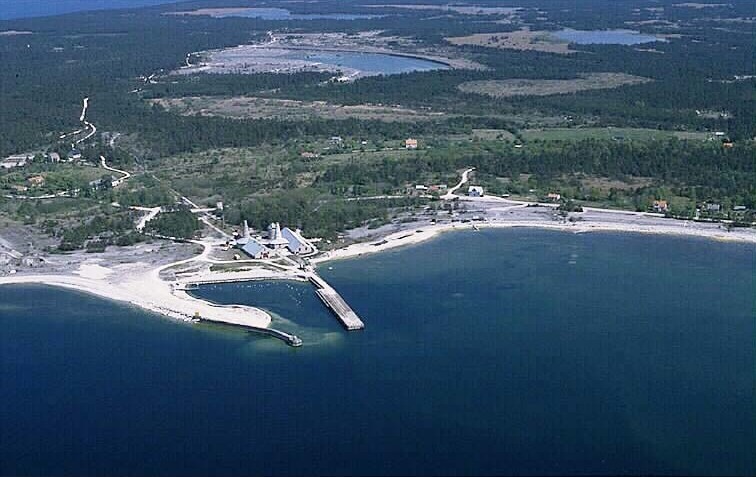
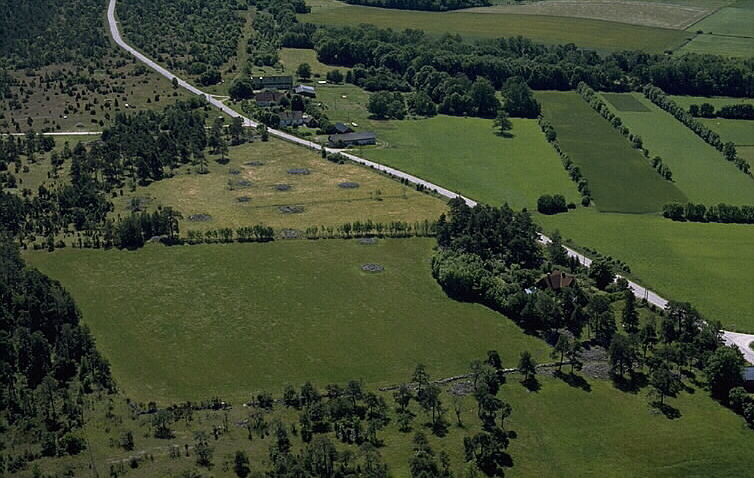

Actions
Aims of the pilot are understanding of factors affecting tourist behaviour and choice of destinations and also revealing what happens during the actual stay, which can give an insight into what visitors experience when they are in a place. As more and more people have access to a smartphone, the experiences of the future will be linked, to a large extent, to the mobile phone. Visitors book their trip, seek information about the destination, chat with others about their experiences, capture what they find interesting with their mobile phone but above all they leave behind digital traces. By following the tracks recorded by mobile masts and GPS information, it is possible to identify different segments and analyse the factors in the information that influence their choice of different attractions. Information that the tourism industry and the archipelago regions can use to better organize tourists’ stay, which in the long term is expected to lead to a wider range of offers and financial sustainability for the rural and peri-urban archipelago regions as destinations. By using GPS-logger techniques as well as GSM-data-resources we can both follow larger population flows on detailed temporal and spatial levels (MIND database allows us to follow > 1 million phones on a daily basis), and detailed trajectories of selected tourists using GPS-loggers (the UU team has 100 GPS-loggers that are employed in data collection).
Communities involved
Representatives of local rural and peri-urban tourism-development organisations, as well as stakeholders from local administration, village/town residents and tourist organizations
Expected results
The possibility to contribute to knowledge that can facilitate growth in depopulated areas of Sweden through new methods and tools to be used in marketing plans and implementation of destination development and marketing. Observed spatial trajectories and behaviour collected using geo-coded devices can be used to construct market segments that help marketing tourism as well as making it possible to promote sustainable tourism.
Associated partners
The project has strong working links and has a long experience of using different platforms for collaborations with regional authorities such as Region Gotland and Region Uppsala, destination managers, regional developers and communities
Cross border and international nature of the pilot case
From the Vikings and onwards, historic water-routes have been used for cross-regional contacts. Much of contemporary tourism development builds on these traditions, including close collaboration with researchers and destination managers across borders.
Innovations
Geocoded services to support marketing of tourism in depopulated areas;
Development of new methods and tools for segmenting tourists based on revealed behaviours;
Creation of a digital repository for GIS-data connected to the project;
Co-creation of knowledge related to policy and strategy formulation and integration in collaboration with
local destination managers and tourism development stakeholders.




